In this episode, I talk about why it’s vital that we don’t avoid the hard conversations or difficult subjects as educators, especially in art.
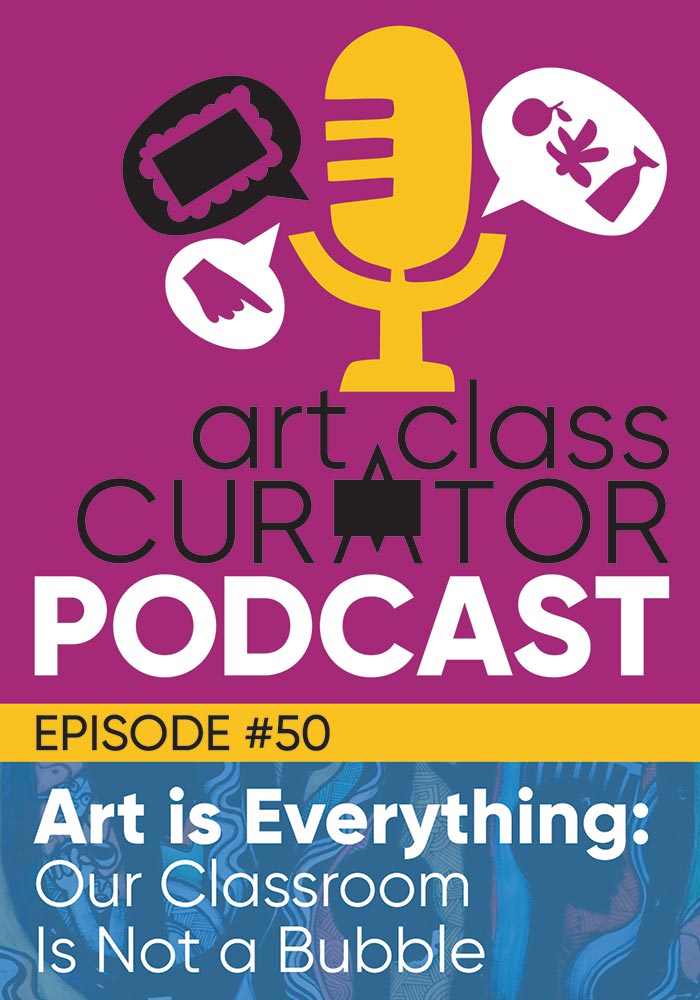
Separation Inspired Artworks from Students:

By J. Toussant

By K. Fox

By K. Adams

By S. Yu
Hello, everybody. It’s Cindy Ingram from the Art Class Curator Podcast. And today I want to kind of…. Not vent, maybe vent, I’m not much of a venter. But I have a comment that someone had posted, or it was not a comment, it was a post in the Art Class Curator Collective Facebook group. So it’s an amazing Facebook group. If you’d like to join us, head over to facebook.com/groups/artclasscuratorcollective, I believe is the address, but you can also just search Art Class Curator Collective.
And we have been talking obviously a lot about Black Lives Matter, how we support our students, how we can become allies, where we can learn about privilege, where we can learn how to help, all of those things. And so the post that this person posted, basically she said that… She said a lot of things. I’m not going to bring up all of them. But one of the things that she said is that basically, what does this have to do with teaching art? That wasn’t the exact word words that she used, but it was like… I’m going to open up the exact words here. It says, “This group is supposed to be about art. So if you want to teach art of many cultures, way cool. To use this as another platform and once more bring our kiddos into this is appalling.” Sorry. I’m reading that exactly as it’s written, and there’s more to it, but that was the beginning. So, “This group is supposed to be about art.” And my first reaction was, this is art. This is about art, because art is everything. Art is all of it. Art is everything. So when we put art in a box, when we put art separate as, this is art and this is real life, we’re doing art a disservice, we’re doing ourselves a disservice, because art is everything.
And I just wrote a bunch of words here, so I’m going to just going to kind of take each word and talk about it, but someone in the comments of that post, and I didn’t save the comments, I deleted the post, but someone in the comments had posted a picture of Guernica. And I thought that was a really good example, because if you think about Picasso, all his terrible character flaws aside, most of his career was painting pictures of still lives, women, children, that sort of thing. And he did not do political art at all, until the bombing of the town of Guernica. And he was so angered by that, that that led him to create his first political artwork. I don’t know how old he was when he made that, but he had done, a large portion of his career not responding to political events. And so it was made in 1937. And he was born… When was Picasso born? This is another chance of you listening to me, Google. Oh, he was born in 1881. So he was a good, like, 50 plus years at this point.
That’s an example of how the world moves us. The world moves us to create, it moves us to process and reflect and communicate and discuss. And art is a tool to do that. And so if we teach art as if it’s this bubble of the elements and principles, of it’s this bubble of technique, of it’s this bubble of just purely making something, we’re missing out on so much, and our kids are missing out on so much. Our kids are capable of having deep, real conversations. And I know so many of us shy away from these sorts of conversations because we don’t want flack from the principal, from the admin, from the parents. “Oh, you’re putting your views on my child,” and all of that. But these conversations can be had without bringing politics into it, without bringing Democrat versus Republican into it, because humanity and people and someone dying under the knee of someone else who is supposed to be helping, that’s not a political issue. That is a human issue.
And that is what we need to talk about. We need to talk about how we got here and how we can change it. And we can do that through art. Art gives us an amazing way to connect and to teach and to educate and to discuss in a safe way. We were talking about the art, but we’re talking about the bigger picture too. So all of this is art. Art also helps us look at the world in different ways. It helps us see something from someone else’s perspective and understand their perspective better. It’s an ultimate way of connecting with someone and seeing something from their point of view. And it’s easy to get trapped in our own mind and our own thoughts and our own experience of the world. And art allows us to see into another person’s experience in a really powerful, powerful way.
I’ve given this example probably a few times, you might’ve heard it. But when I was teaching community college, which was very early when I first started teaching, I would do a non-Western cultures group project, which if you remember the Curating Connections library, all the materials to do that project are in there. So just a little plug there, but each group would be assigned a different culture from around the world, well they would be assigned a part of the world, and they got to choose what culture it was, whether it was like something ancient or something, a group now, or anything like that.
So anyway, they were doing their presentations, and of course I required them to lead a discussion or some sort of engaging activity with the class. So it was more than just a presentation, they actually had to engage the class in some way. So I started teaching community college in 2007. And so this was right around the same time as the Iraq War, five years after 9/11, and Muslims were very much distrusted, and that’s not over, but it was big. And I live in Texas. And so one of my students was Muslim, and he wanted to do Islamic art as his presentation. So he and his group did a presentation on Islamic art, taught some of the main fundamentals, taught a little bit about the religion, and where it came from and all of that. And then I always let the class ask questions.
And so what happened was the discussion kept going. The kids in the class took that as a wonderful opportunity to have someone to talk to and ask these questions that they had. And so there were boys in the class who really thought all Muslims are terrorists and they would ask him, they were like, “Why is that? What…” And so there was this back and forth, it went on way longer than their presentation time. It was one of those Saturday morning, three hour classes. So we were scheduled to take our break. And I let some of them take a break, but I was like, “You can keep having this conversation through the break if you want to.” And they did, they kept talking about it, and they were talking about it after. And it was probably one of the highlights of my teaching career to see like, that activity made some changes in some people in that classroom. And think of the ripple effect of that throughout their lives. That was about 15 years ago. That can’t be true. Yeah. 10 or like, 12 years ago. Holy crap. Okay. Sorry. I just all of a sudden can’t believe how old I am.
So anyway, these conversations that start through art give students the ability to have a place to talk about things, have a place to reflect and to think, and that’s why we really harp on the idea of personal connection to art so much in what we do at our Class Curator, is because we know the power that an artwork has to change you, to change your life, to make you see the world in a different way, to connect you with someone else in a really deep, meaningful way. When you see the art made by another culture, when you see the art made by another person who is different than you, it connects you to their humanity in ways that you might not have connected. And this goes for music that they make, it goes to videos, performances, any type of art connects you to a person in a way that is so pure and so deeply connected.
So we can’t say that this is not about art. If we were doing crafts and painting flowers and teaching about implied line, and that’s all we did, okay, are you really teaching art at that point? Okay. Well, that’s where I’m going to start getting ranty there. So that’s what art is. It’s everything. We talked about the humanity and the connection. It gives kids and people and adults a chance to process, through the looking at art, discussing art gives you a chance to reflect and process. And through the making of art gives you another chance to reflect and process. One of the first answers I always get in the aesthetics lessons that I do at the beginning of the semester is that art is expression. And I kind of sometimes disagree, that not all art is expression, but it can be expression and it can be a way to process your feelings.
And we’ve seen some really amazing things just in the coronavirus. One of the people on my team, Jennifer Easterling, who has been on this podcast before, and she writes a lot of our lessons in the membership. She did our SPARK distance learning curriculum with her kids. And she wrote a lot of the projects in there. Well, I think she wrote all the projects in there. And she did this with her students. And one of them was a project inspired by Edvard Munch’s Separation. So the artist who did The Scream, he did a series of other paintings about core human emotions. And this artwork, Separation, is one of my favorites.
So her project was to assign them to do anything… Anytime that they felt isolated or lonely or separated and that sort of thing. And then they had to create something in that vein with any media, because the kids are at home. We didn’t know what they would have. So she shared with me some of their projects, there’s digital, there’s photographs, there’s all sorts of different things, but they’re all so deep and so meaningful. And these kids were really connecting deeply with that feeling, because they were separated, they were isolated, in their safer at home situations during the pandemic.
So art gives us a chance to tell our stories, to tell about our emotions, to process our emotions, to think about our emotions in such powerful, powerful ways. And so we need to do that through the Black Lives Matter movement. We need to be involved. We need to be actively anti-racist from the artworks we choose, the lessons that we do, all of our interactions with our students and the community, now is the time to make these changes. We need to not shy away from talking about it with our students, because it is about art. It is.
But I know that some of you, and I was in this situation, that some of you feel like you’re not supported from your admins. And I really hope that this changes with everything going on right now. I was teaching during the 2016 election. And the day after Trump was elected, I got a text message to all staff, all teachers, that said, “Don’t talk about this today with the kids.” And I was like… You’ve never seen me so mad. And I actually don’t get mad that often. But I was so mad, because I was like, one, it’s history. This is like a civic action, a major presidential election. And you’re telling me not to talk about it? That’s weird, first of all. But our students were, I think 90% Latino. And then I don’t remember the rest of the percentages, but it was mostly Hispanic students or Latino students.
So anyway, that was hard. And I did not follow that rule. I’m not really a rule follower sometimes. Like if I don’t agree with the rule, I won’t follow it. So anywho, that’s a rant for another day. So I know you don’t feel like you’re supported in this, and that’s a really good conversation to have with your teacher friends.
And so I recommend you joining our Art Class Curator Book Club, we are going to read “For White Folks Who Teach in the Hood… and the Rest of Y’all Too” by Christopher Emlin, I believe. I should have had his name offhand. I think that might be right. Yes, Emdin, not Emlin. We’re having a meeting for that book club on June 24th. So that’s only next week. So you might not have a time, but we’re going to have a second one on July the 8th. So you can find out about that by visiting the Art Class Curator Book Club Facebook group. And also if you’re on our email list, you should have gotten an email about that as well. Links to everything I mentioned today will also be in the show notes at artclasscurator.com/50.
Thank you so much for listening to the Art Class Curator podcast. I will see you next week. Bye.
Subscribe and Review in iTunes
Have you subscribed to the podcast? I don’t want you to miss an episode and we have a lot of good topics and guests coming up! Click here to subscribe on iTunes!
If you are feeling extra kind, I would LOVE it if you left us a review on iTunes too! These reviews help others find the podcast and I truly love reading your feedback. You can click here to review and select “Write a Review” and let me know what you love best about the podcast!


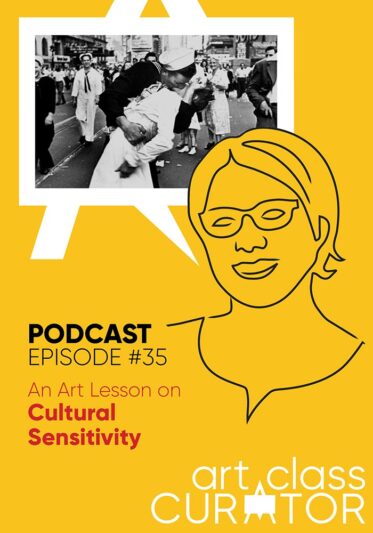
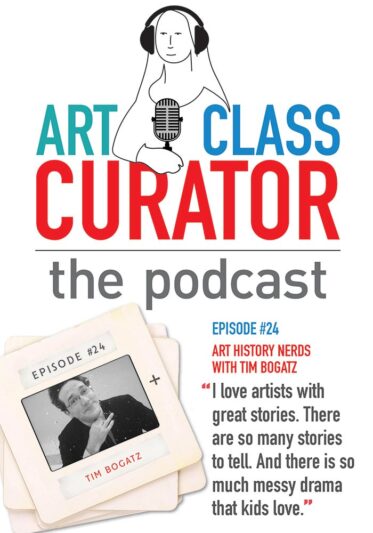
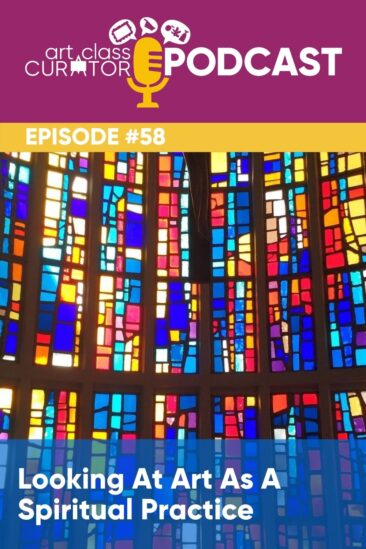
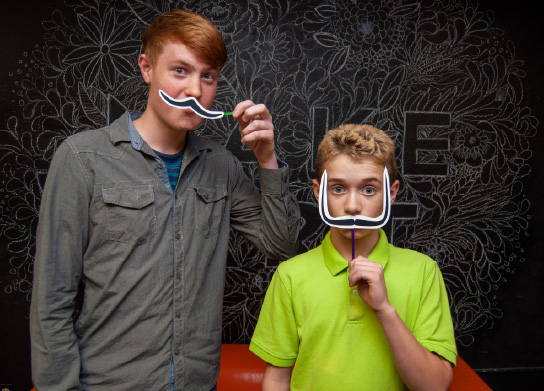
Leave a Comment